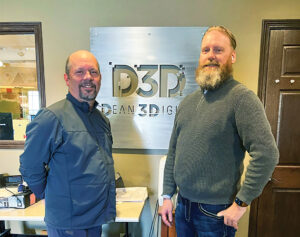When helping companies boost retention, talent and leadership expert Nicole Lian urges leaders to integrate a well-defined corporate culture into key areas of employees’ experiences. Lian is one of Enterprise Minnesota’s business growth consultants whose advice has been in high demand as manufacturers continue to wrestle with persistent low employment.
Lian says manufacturers understand that retaining employees is more cost-effective and less disruptive than continually recruiting a stream of new hires to replace those who leave. She says the key to successful retention efforts is to use culture to keep employees closely connected to the company, especially in three critical areas of their employment: hiring, professional development, and compensation.
First things first
Enterprise Minnesota President Bob Kill has repeated for years that employees have become manufacturers’ most important customers. All outcomes, from quality and on-time delivery to profitability and growth, depend on employee satisfaction.
Most manufacturers in today’s low unemployment climate strive to develop employee-centered corporate cultures. Still, many struggle to articulate and demonstrate a clear sense of their culture to employees.
“The companies I work with are very employee-focused,” Lian says, “but not all of them communicate that in a consistent manner and at key moments.”
That might be because even the concept of corporate culture can be difficult to define. It isn’t about hanging banners with catchy slogans in the breakroom, Lian says. Instead, she describes it as a combination of the values, shared purpose, traditions, and communication styles that drives the team.
In companies with a strong, employee-centered culture, leaders visibly live out their stated values that treating employees, customers and suppliers with respect. Employees feel valued and appreciated; they understand they are a critical part of a team and want to do their best work to help the company reach its goals.
Right from the beginning
Lian says communicating culture is valuable throughout an employee’s life cycle with the company.
In the early stages of recruiting, both employers and employees are determining if they are a good fit for each other. During informal networking or structured recruiting events, managers need to clearly and honestly articulate the company culture to possible hires.
Leaders need to be transparent about what employees can expect from the company: How do employees and managers interact with each other? Are employees empowered to offer suggestions or make process changes? Are they encouraged to develop new skills? Is there clear room for career growth?
Employers should also use that time to determine if candidates are likely to thrive within the company’s culture. “Have a clear understanding of how your company communicates and then ask potential employees about their communication styles to see how they will fit in,” Lian says. “Ask them to talk about a time when they worked as a team to solve a problem. Invite them to explain how they have handled a flaw in a system.”
While hiring often feels urgent, Lian encourages companies to avoid rushing to fill open positions. “You know your values, and you know your purpose. If you take your time to find employees who will fit with your culture you’ll have much better odds of long-term retention,” Lian says.
Onboarding procedures also offer a great opportunity to demonstrate how culture translates into day-to-day expectations, Lian says. “Use this time to get employees started in the right direction.”
A company with a creative, flexible culture should introduce that atmosphere on day one. Hands-on tours, workshops on innovation and creative thinking, mentorship programs with internal innovators or visionaries will display the mindset that new employee is expected to have, Lian says.
Onboarding in a family-oriented culture should focus on building relationships, team-building activities, and “show-and-tell” about the organization’s traditions and values. Coaching or mentoring programs should connect new hires to those who can best demonstrate and instill that ethic.
Lifelong development
Companies that promise career growth and development opportunities during the hiring process must stay true to those commitments. “The worst thing you can do for your company culture and employee morale is to assure employees that you value their personal and professional growth and never give them additional training or responsibility,” Lian says.
It’s tempting to keep top performers in the same position, Lian says, noting that moving people into new roles and filling those openings adds more work for leaders. To ensure that doesn’t happen, she encourages companies to make employee growth an established, predictable part of operations.
Employees will appreciate having a written, scheduled process that reviews training opportunities and explores career growth within the company, Lian says, adding that managers should discuss professional growth with employees at least every six months. “Once you boil that into your culture, you will have people who want and expect to keep learning. And that will translate into higher employee satisfaction.”
Lian also recommends using a skills training matrix to assess what a team needs now, and what it will need to support future objectives and growth. Involving employees in determining those strategies will help employees understand processes and needs as much as anyone in the organization.
When employees are consistently challenged to grow, and they are part of the process that determines what skills the company will need for future success, it strengthens their connection to the company. “They won’t feel the need to look at other employers for opportunities,” Lian says.
Finally, manufacturers should emphasize personal development by marketing current in-company opportunities, even those outside an employee’s existing skill set. “Let them know about all the openings. They might not be in their current area, and might not involve lateral moves,” she says. “But it shows the company is true to its commitment to encouraging employee development.”
Aligning compensation and culture
Effective managers use the structure and communication surrounding employee compensation to reinforce culture and build good will in the workforce, Lian says. She recommends evaluating market-level compensation, making necessary changes, and communicating those changes. “Even if you are already paying at market levels, it’s important to let employees know that. If you need to make some adjustments, explain what they are and why you’re making them,” she says.
Return to the Summer 2024 issue of Enterprise Minnesota® magazine.


